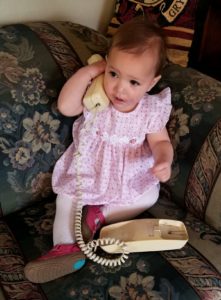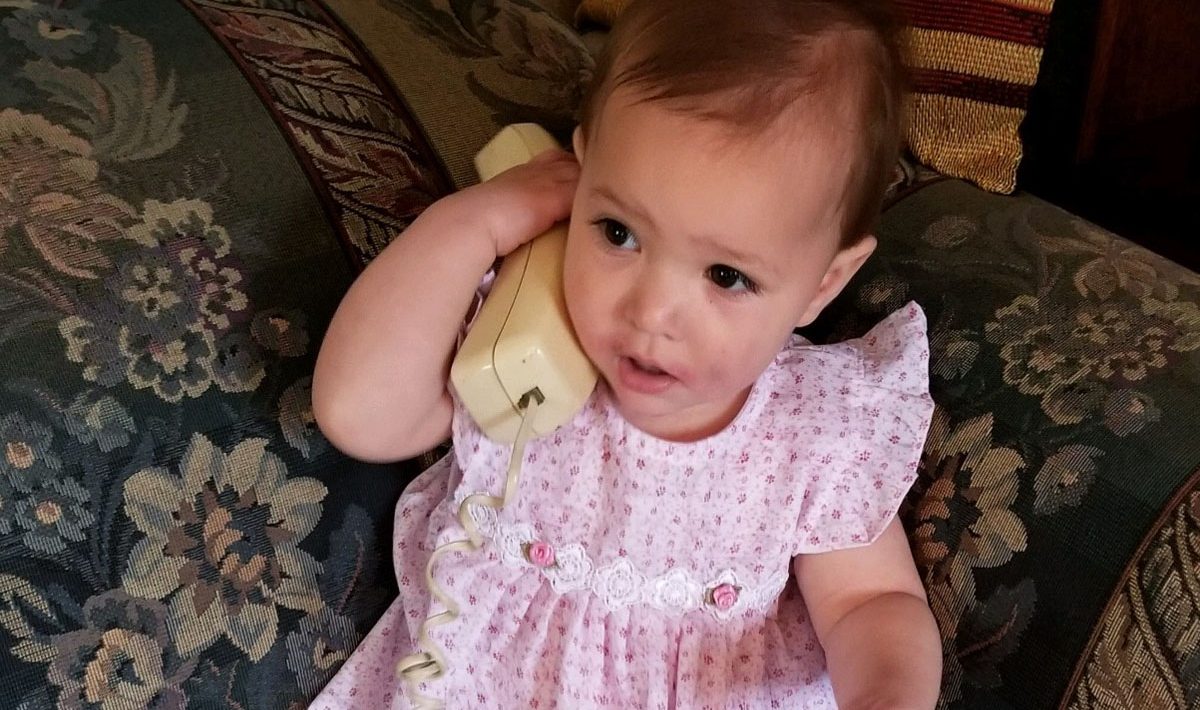By JEFF ROUBAL
Martinez News-Gazette Contributor
A friend at the American Legion asked me last week to update his telephone number on the membership list. He and his wife had just disconnected their home phone permanently. From now on, they will be using their cell phones exclusively while away and while at home.
I was not surprised. More than half of American households have given up their home telephone numbers to save money and simplify their lives. According to a 2016 U.S. Center for Disease Control National Health Information Survey, only 46 percent of American households still have a landline phone. None of our three children have a home phone. Vivian and I have been talking about downsizing too but I am hesitant to give up something that has been such an integral part of my life.
The whole time I was growing up in the 1960s, we had a wall phone in the kitchen. That was the common setup. All our friends and neighbors had a wall phone in their kitchen. Beside our phone, mother kept a wall calendar for appointments and a notepad with pens and pencils for taking messages. When my brothers and sister and I took off with the writing implements one too many times, my mother brought home a bank pen that she secured to the wall with a heavy chain.
After we were married, Vivian and I had wall phones in the kitchens for the first three places we lived. At some point, the telephones changed from rotary dial to push button. That saved a lot of wear and tear on the fingers and speeded up dialing – not that we called a lot. It wasn’t like today. Local calls cost a nickel a minute after the monthly free allowance. Long distance calls cost one to ten dollars a minute depending on where and when you wanted to dial. Nighttime calls were much cheaper so that is when we used long distance. Everything had a set price. There was no negotiating or shopping around for better rates. Only one company was available so telephone service was a take-it-or-leave-it proposition.
Not that there weren’t ways to save money. When I was a kid, we had a secret code to signal Mom for pick-up after school. I would insert my dime in the payphone and dial home. After three rings, I would hang up then repeat the sequence. Mom would hear the signal and hop in her car to come get us. I could use the same dime over and over as long as nobody picked up the receiver. Mom devised this scheme but successful execution was a source of daily satisfaction to me as a clever ninth grader.
For a different signal we would call collect (reverse the charges). “Will you accept a collect call from John Greenwood?” the operator would ask my Mother. “No.” my mother would reply, understanding the message that signaled my friends and I had arrived safely at our destination – without incurring a telephone charge.
When Vivian and I moved to Germany in the 1980s, our “Deutsche Bundesbahn telefon” (phone from the German national telecommunications company) was installed in the entrance hallway where it sat on the floor. Like other German households, we bought a special telephone stand with a place for the phone, a place to sit, a writing surface, and a little drawer for pencils and paper. I see these for sale in the antique stores from time to time. Some are beautifully crafted but do not really have a practical use anymore – like many beautiful antiques, unfortunately.
I have always liked to tinker with household appliances, and our telephone was no exception. My first trick after we returned from Germany was to swap out our standard handset cord with a 12’ retractable coil cord from Radio Shack. It could stretch up to 20’ which allowed roaming all around the kitchen and half the dining room – a great improvement.
In our next apartment, I figured out how to tee off the phone line for a second phone. I extended the phone line from the kitchen to reach the bedroom. Telephone lines ran all around the baseboard, up the ceiling, and over the doorways. The limitation with this arrangement was that we could only use one phone at a time because the volume would decrease by half if you picked up both at the same time. On the plus side, nobody could listen in on the extension without your knowledge.
For the next house, I bought a new fangled speakerphone. This was great. We did not have to walk around carrying a handset. Our hands were free to do other things. I still have a speakerphone in our kitchen. The one little downside is that everyone in the house is part of every conversation.

When I was assigned to work at headquarters 7th Air Force, my office phone came with a host of bells and whistles. We had call waiting, call forwarding, hold, conference calling, and my favorite, “camping.” If you called someone and his or her phone was busy, you could push the camping button then hang up. The system would poll your phone and their phone every five minutes. As soon as both were free, your phone and their phone would ring simultaneously — pick up and you were connected. I would love to have that feature on my phone again. Since those days, inventors have come up with even more enhancements like voicemail, caller ID, custom ringtones, do not disturb, speed dialing, voicemail to email, and more.
A couple years back, I bought rechargeable cordless phones for the house. The set came with a base station, five handsets and five chargers. After playing around with it for a couple days, I ran back to Fry’s Electronics and bought another set (while the sale was still on). “What are you going to do with ten telephones?” my wife asked skeptically. I installed one in the kitchen, one in the bedroom, one in the living room, one in the guestroom, one in the secret room (those who have been to our house know where that is). Running out of places, I put one in the dining room, one in the bathroom (Vivian rolled her eyes at that one), one in the garage, one in the entrance hall, and finally, one in the basement. When someone calls our house now, all the ringers in every room sound simultaneously and caller ID announces the phone number calling. It sounds like a civil defense air raid warning! I jump at every call and Vivian rolls her eyes.
Unfortunately, most of the people who call the house now are telemarketers. Nonetheless, it is exciting for me to hear the all the bells go off. I generally activate the speakerphone button, listen for a minute to let them get their pitch out, then say “Please don’t call again and take me off your list so nobody else calls.” I have never caught anyone calling back again although some have started calling my cell phone now too.
I hate to give up our landline but handwriting is on the wall. In two or three years, Vivian and I will no longer have a home phone. I will miss advantages of the older technology. Landlines provide redundancy in case cell phones stop working. There is no danger of losing bars or dropping calls with a landline. I will miss the intrigue of secret ring patterns and code names. I also miss a time when there was no possible way to lose your telephone because it was screwed securely to the wall in the kitchen. For now, I still have my landline and that is a good thing. I am now going to use my landline to call my cell phone that has been misplaced again.





